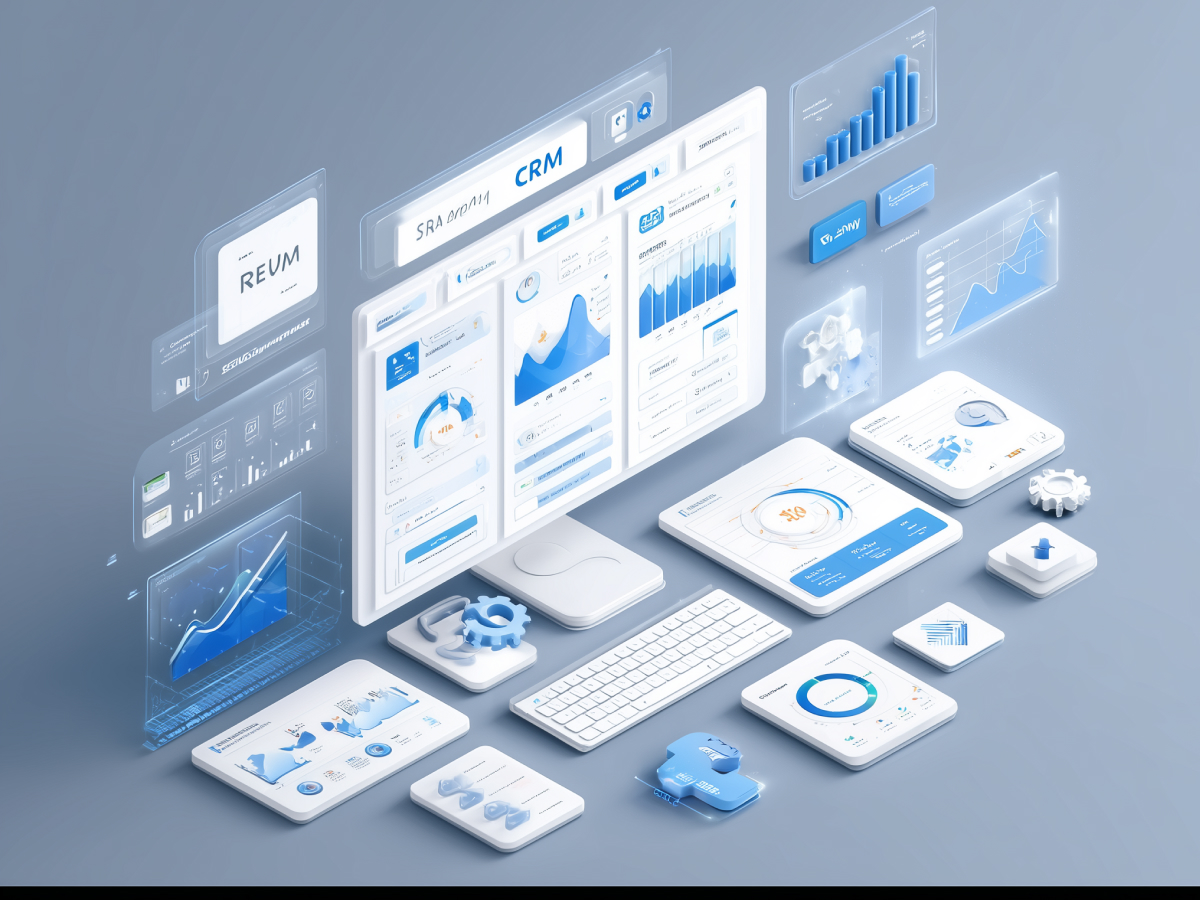Hype around AI replacing employees: What’s really happening?
Across industries, there’s growing buzz about the potential of AI to replace human employees. This conversation is especially prevalent in boardrooms, conferences, and executive meetings, where leaders are eager to leverage AI to reduce operational costs.
The idea of replacing human workers with AI presents an attractive prospect for cost savings—however, it also raises questions about the impact on service quality and long-term business sustainability.
Why executives are eager to replace employees with AI
Executives are increasingly interested in AI as a solution to reduce the costs associated with human labor. Employees require benefits, such as healthcare, vacations, mental health programs, promotions, and professional development. These costs can be substantial, particularly in regions with high labor costs.
AI presents an opportunity to cut these expenses, offering a more streamlined and cost-effective solution for routine and repetitive tasks.
That being said, and while the financial benefits are clear, the rush to replace human employees with AI can easily overlook the broader implications for employee morale, service quality, and organizational culture. Balancing cost reductions with the need to maintain high service standards and employee satisfaction remains a critical challenge for executives.
The case for AI augmentation
How much of a CEO’s job can AI automate?
AI has the potential to automate a large portion of a CEO’s daily tasks. Recent studies suggest that 75-90% of these tasks, which typically involve data collection, analysis, and decision-making recommendations, can be managed by AI more efficiently than humans.
Tasks such as scheduling, data analysis, and report generation can be handled by AI, freeing up time for CEOs to focus on strategic initiatives.
Benefits of augmenting human tasks with AI
While AI can take over many routine tasks, the remaining 10-25% of a CEO’s role is irreplaceable, typically involving critical human elements such as empathy, accountability, vision, and inspiration. These qualities are central to expert leadership and cannot be replicated by current AI tools and models.
CEOs must augment their roles with AI to dedicate more time to these essential human aspects—ultimately enabling leaders to build stronger relationships with their teams, drive organizational vision, and inspire innovation. Focusing on the human-centric tasks allows for a more engaged and motivated workforce, then leading to improved overall performance.
How to shift repetitive tasks to AI and free up creative energy
AI excels at handling mundane, repetitive tasks that often consume a large portion of employees’ time. Tasks such as data entry, routine analysis, and basic customer inquiries can be more efficiently managed by AI, so that human workers can then focus on more creative and strategic responsibilities.
Shifting these tasks to AI can lead to a more dynamic and engaging work environment. Employees will be able to dedicate their time to problem-solving, innovation, and building relationships—areas where human intuition and emotional intelligence are of prime importance.
Organizations must revise job descriptions and organizational structures to prioritize human-centric tasks so that employees are equipped to leverage their unique skills and creativity.
Boost human skills with AI: Developing soft skills in your workforce
AI can also provide valuable insights into employee performance and development needs through analyzing performance data to ultimately identify key soft skills that contribute to success in specific roles.
AI-driven assessments can highlight communication strengths or areas for improvement, guiding targeted training and development initiatives.
Leaders can then focus on cultivating relationships and developing employees’ soft skills, such as teamwork, leadership, and adaptability. These skills are growing more and more important in a competitive business world, contributing to a more positive organizational culture. AI tools can support this development by providing personalized feedback and learning recommendations based on individual performance data.
Unlocking insights from existing data also helps in hiring and nurturing the right talent, analyzing patterns in employee performance and retention, informing strategies for talent acquisition and development. This makes sure that organizations attract and retain employees who have the required skills AND align with the company’s culture and values.
Save money and support your team: The AI Advantage
Operational savings achieved through AI should benefit employees, not just the organizations’ bottom line. AI can benchmark compensation packages by analyzing industry standards, employee performance data, and organizational goals—helping build competitive and fair compensation packages that attract and retain top talent.
Managing workloads and providing more time off contributes to better hiring, productivity, and performance.
Research indicates that companies offering flexible work schedules and reduced workloads see a 30% increase in employee productivity and a 50% reduction in turnover rates. Organizations must balance operational savings with employee welfare if they are to create a more sustainable and motivated workforce.
Why flexibility and autonomy matter more than ever in compensation
Non-tangible compensation factors, such as work flexibility and autonomy, are key in raising employee satisfaction and retention. Surveys show that 80% of employees prioritize work-life balance over salary. AI can help identify these factors by analyzing preferences and performance data to ultimately shape a better team and work culture.
AI helps tap into soft skill competencies so that organizations can create roles that provide employees with the autonomy to make decisions and manage their tasks. This then builds up a sense of ownership and accountability, which in turn drives higher engagement and productivity.
Combat burnout by using AI to trim workloads and shorten work weeks
Burnout among employees is a growing concern, with negative impacts on productivity and turnover rates. Reports have shown that burnout is responsible for up to a 50% increase in voluntary turnover, costing U.S. companies over $1 trillion annually.
As workloads increase and workweeks lengthen, employees are more likely to experience stress, fatigue, and disengagement.
AI offers a solution by boosting workforce efficiency and providing employees with more time in their day. Co-pilot style AI tools can assist employees with routine tasks, automating repetitive processes and freeing up time for more meaningful work. For example, AI-powered scheduling tools can manage calendars, set reminders, and handle administrative tasks, letting employees focus more on strategic and creative initiatives.
Employees must learn to integrate and use AI in their workflows as a tool to assist—maintaining control over their tasks while benefiting from increased efficiency. This can help reduce burnout by decreasing the volume of mundane tasks and giving employees more time to recharge.
Adding to this, leaders should avoid replacing junior employees with AI if they are to strive for long-term organizational success. Junior employees provide the talent pipeline required to develop competent senior leaders. AI should complement human efforts, helping employees grow and advance within the company while maintaining a healthy work-life balance.
How markets and governments can guide ethical AI adoption
Market-driven corporations often prioritize short-term gains to satisfy shareholder expectations, creating pressure that can lead to an aggressive push towards replacing employees with AI to cut costs. While this strategy might yield immediate financial benefits, it overlooks the long-term implications for organizational health, employee morale, and service quality.
Leadership, characterized by human traits such as empathy, vision, and accountability are keys to implementing AI in a way that benefits both employees and companies.
Leaders must balance the drive for efficiency with the need to maintain a motivated and skilled workforce. Effective leaders recognize that investing in their employees’ well-being and development ultimately leads to better business outcomes.
Government intervention may also be necessary to provide clear guidelines for ethical AI usage. Policies and regulations can help make sure that AI adoption prioritizes improving lives and maintaining fair labor practices.
For instance, governments can mandate transparency in AI decision-making processes, making sure employees understand how AI has and will impact their roles. Regulations can also address issues such as data privacy, bias in AI algorithms, and the ethical implications of AI-driven decisions.
Governments must establish a framework for ethical AI adoption if they are to protect workers’ rights and promote AI as a tool for augmenting human capabilities rather than replacing them—safeguarding and encouraging employees and companies to adopt AI responsibly.
Final thoughts and looking forward
The current discourse about AI often focuses on its potential to replace human workers, a perspective that overlooks the broader benefits of AI as a tool for empowerment and productivity growth. Shifting the conversation towards how AI can augment human roles is a must for realizing its full potential.
As you consider the future of your organization, leaders must ask themselves: Are you using AI to truly empower your workforce and help them reach their full potential, or are you simply chasing cost savings at the expense of quality and innovation?
AI must be seen as a partner in this journey, shifting its spotlight to human creativity and strategic thinking. The success of businesses depends both on technological adoption and how well you integrate and grow the human element within it. How will you leverage AI to stay competitive, thrive and even lead in your market?




